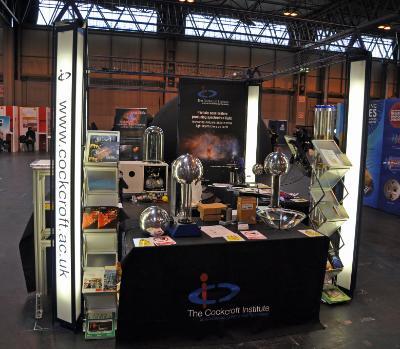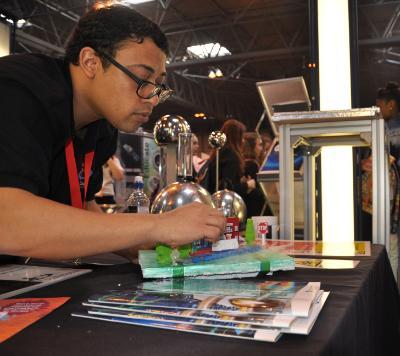The Big Bang National Event - It all started with the Big Bang!!
Last week has seen an exciting, science-tastic Big Bang event at National Exhibition Centre (NEC) in Birmingham, UK. The event is the UK’s most popular Science and technology Fair, which last over 4 days from 13th-16th March 2014. The Big Bang fair boasts the largest exhibitions from all different career sectors eg. academia, industry and commerce. The event is continuously growing in popularity with participation this year of over 55,000 attendees of all ages travelling from all over the UK. It provides the ideal chance for students and teachers to meet real scientists and engineers, to talk with them about their work, and gain an insight into what it is they do. Some of the key aspects of the fair are to share advice on career prospects and job opportunities, as well as insight into new knowledge and ideas for teaching in the classroom. The event ended off with a contest of student participants from schools all over the UK, whom have submitted projects in which after much work a well-deserved National Winner was selected. The NEC Birmingham “Big Bang” events will continue to grow with next events already planned for 2015 and 2016.

oPAC fellows Blaine Lomberg and Emilia Cruz, from the Cockcroft Institute attended the event to help run a stand and to demonstrate some of the functional principles of how a particle accelerator would need to operate. Blaine explained that this stand is an outstanding way to promote science and its relevance by showcasing mind-blowing demonstrations which illustrate aspects of the scientific work carried out by the oPAC Network at the Cockcroft institute.
The stand exhibit included the innovative vacuum demonstrations that used a large bell jar to show off various fascinating and intriguing aspects of vacuum science. Other exhibitions we had on show were the popular Van de Graaff generator to drive a miniature electrostatic accelerator. The Cockcroft stand was very attractive for students and teachers whom stayed long enough to be astonished by the operation of the electrostatic accelerator when like charges repel, thus when demonstrating how hairs can be made to repel each other and stand on-end, visitors were shown how the same high voltage source could be used to accelerate a charged particle. The stand also included a demonstration of the Meisner effect, in which Blaine shows how a piece of superconductor when cooled with liquid nitrogen forces a magnet to ‘levitate’. The phenomena captivate visitors at the jaw-dropping effect of superconductors, prompting questions and interests.

The oPAC fellows Blaine and Emilia expressed great enthusiasm and intensity while at the Big Bang event. They both believed the event was a success and that they hope the students and teachers have learnt from the experience. Blaine commented that he aims to get more students interested in science and is really looking forward to the regional event at both the St. George’s Hall and the World Museum in Liverpool which will take place later in the year.